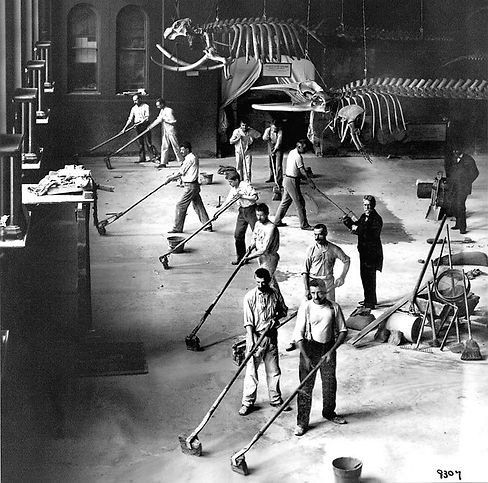What is Terrazzo - A Brief History
Terrazzo descended directly from simplified forms of centuries-old styles of marble mosaics that were used in Venice by the mid-15th century. Today’s highly evolved terrazzo is an environmentally friendly material that combines extraordinary design potential, optimum durability, and low maintenance. Not surprising, Terrazzo is the lowest cost flooring material available based on its long life cycle.
WHAT IS IT!
Terrazzo is a composite material, poured in place or precast, which is used for floor and wall treatments. It consists of chips of marble, quartz, granite, glass, or other suitable material, poured with a cementitious binder (for chemical binding), polymeric (for physical binding), or a combination of both. Metal strips often divide sections, or changes in color or material in a pattern. Additional chips may be sprinkled atop the mix before it sets. After it is cured it is ground and polished smooth or otherwise finished to produce a uniformly textured surface. "Terrazzo" is also often used to describe any pattern similar to the original terrazzo floors


RECYCLED!
Terrazzo was created when resourceful Venetian mosaic workers discovered a way to reuse marble remnants. With odd-size chips, they began to build terraces around their living quarters. Techniques for leveling these surfaces progressed from rubbing with a stone by hand, to the development of long-handled, weighted grinding stone, called a galera. The first sealer for terrazzo was discovered when workers noticed that a coating of goat milk brought out the rich colors and sheen of the marble.
INCREASED POTENTIAL!
Due to its likelihood of cracking, terrazzo was used at a small scale in comparison to the large expanses we see today. Two inventions resulted in its rise in popularity: divider strips and the electric grinding machine. The invention of divider strips by L. Del Turco and Bros. in 1924 contained the cracking of terrazzo by allowing the material greater space to expand and shrink after installation. This invention made terrazzo a durable and reliable material in addition to allowing for further design work within the floor.[3] Installers use the dividing strips as guides when they work with different colored terrazzo. Additionally, the electric grinding machine and mechanization of the production process cut down on costs and installation time, making terrazzo an affordable flooring option.



Today Terrazzo is still timeless!
It's continued use in Commercial buildings and restaurants along with private residential projects shows the popularity of the product.
Endless colour options, sizes and applications!
Fashions, demands and dreams come and go, but terrazzo has a wonderful ability to be both timeless and modern. Today, everything is possible – just as it was thousands of years ago. That’s the way we see things here at Belgravia Terrazzo
